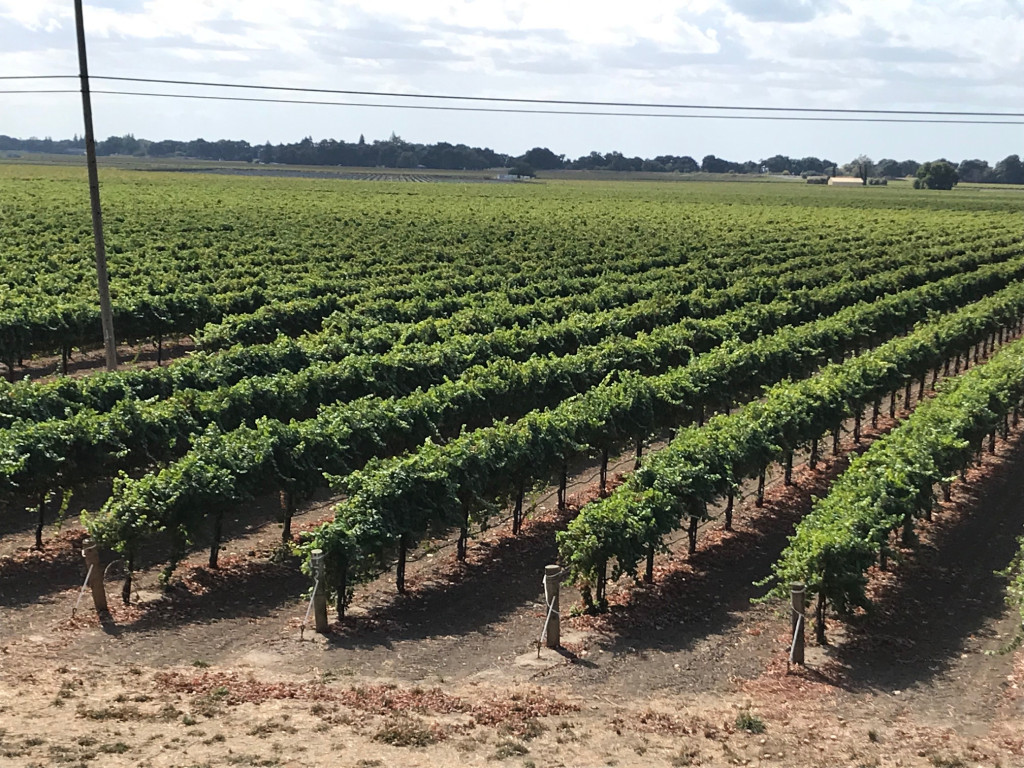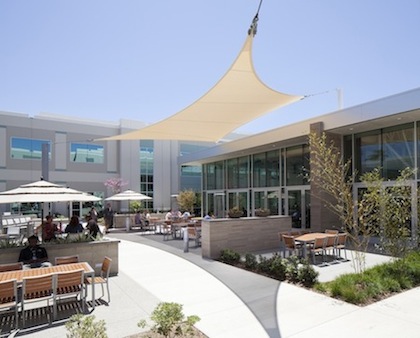Daily Business Report-Feb. 10, 2020
Pechanga Arena, also known as the San Diego Sports Arena. (Courtesy Pechanga Resort Casino)
City of San Diego seeks bids to
develop and manage Sports Arena site
The city of San Diego has issued a request for proposals (RFP) from qualified firms and interested parties to redevelop, rehabilitate, operate, maintain and manage a 48-acre site comprised of six continuous parcels of land, commonly known as the Sports Arena.
Currently home to the Pechanga Arena, retail businesses and a parking lot, the site is located within the Midway-Pacific Highway Community Plan area. This community is undergoing extensive revitalization and is a leading commercial center with diverse retail and affordable housing opportunities.
“This is an opportunity to breathe new life into the Midway and unlock its full potential as an entertainment district for all San Diegans can enjoy,” said Mayor Kevin Faulconer. “With 48 acres of developable land, we can create a connected community with entertainment, housing, retail and mobility options that meet our long-term goals to create a more sustainable future and build more housing that San Diegans can actually afford.”
Under the terms of the RFP, the city will accept proposals from organizations that will help achieve the city’s vision of a pedestrian- and transit-oriented landmark that sustainably incorporates a mix of entertainment, office retail, residential, affordable housing, recreational, public and park/plaza uses. Bidders can also propose renovating and rebuilding the existing Pechanga Arena with new commercial retail, office and residential space offerings.
Qualified proposals are due by Thursday, June 4, 2020, at 5 p.m. For more information, or to download the request for proposals, please visit sandiego.gov/real-estate-assets.
________________________

Poll workers still needed for March 3 Election
Time is running short, and poll workers, especially those who are bilingual in any one of six specific languages, are still needed for the March 3 Presidential Primary Election. The Registrar’s office is required by federal law to provide bilingual speakers and voting materials to voters who speak Spanish, Filipino, Vietnamese and Chinese. A survey by the University of California, Berkeley showed a need for speakers of Arabic and Korean at about 90 precincts, so the Registrar’s office is also recruiting bilingual poll workers in those languages for the March 3 election.
In addition, the Registrar needs standby poll workers who can be assigned on short notice. Standbys who can also speak a second language are in demand, too. Poll workers receive a stipend ranging from $100 to $175 depending on the assignment, and those who are bilingual receive an additional $15 if they are assigned specifically to provide language assistance to voters. Poll workers must be registered voters in the state of California or must be permanent residents in the United States and have transportation to their assigned polling location. They will also need access to the internet to complete an online training and attend a 2- or 3-hour in-person class depending on their assignment.
Prospective poll workers can apply online at sdvote.com. For more information, call (858) 565-5800 or email pollworker@sdcounty.ca.gov. The Registrar of Voters office is located at 5600 Overland Ave., San Diego, 92123 on the County Operations Center campus.
________________________

Assessing ‘stickiness’ of tumor cells
could improve cancer prognosis
A team of researchers led by the University of California San Diego has created a device that measures how “sticky” cancer cells are, which could improve prognostic evaluation of patient tumors. The device is built with a microfluidic chamber that sorts cells by their physical ability to adhere to their environment.
Researchers found that weakly adherent cells migrated and invaded other tissues more than the strongly adherent cells from the same tumor. Also, the genes that identify these weakly adherent cells make patients’ tumors five times more likely to reoccur within five years.
The team reported their findings in a study published in Cancer Research.
________________________
Encinitas mayor appointed to three-year
term on Airport Authority board

Encinitas Mayor Catherine Blakespear attended her first meeting Thursday as a board member of the San Diego County Regional Airport Authority. Blakespear was appointed by the North County coastal area mayors to serve a three-year term on the board representing North County coastal cities.
Mayor Blakespear is a fourth generation resident of Encinitas and is currently serving her second term as mayor. She is working to improve open space, trails, parks and beaches, as well as upgrading Encinitas streets. She is also committed to environmental issues impacting Encinitas and supports efforts to reduce pollution and direct the city’s Climate Action Plan.
In addition to her role on the Airport Authority Board, Blakespear serves as the vice chair on SANDAG’s Board of Directors and holds positions on various regional water and waste water district boards.
Blakespear replaces Michael Schumacher who ended his three-year term on the Authority Board as the North County coastal cities representative on Jan. 27. She will serve on the Airport Authority finance and audit committees.
________________________

County helps to re-open 28
affordable homes in Carlsbad
Twenty-eight affordable homes officially re-opened in Carlsbad, thanks to the county Health and Human Services Agency.
The county invested $675,000 in HOME funds in the rehabilitation of Vista Las Flores, an apartment community that serves low-income families who make 60 percent or less of the Area Median Income. The homes come in two- and three-bedroom configurations with three reserved for families with at least one family member who is experiencing a developmental disability.
The property, which Wakeland Housing originally developed with San Diego Interfaith Housing Foundation in 2002, recently completed the rehabilitation project which revamped the entire property, including all 28 apartments and the community room.
Vista las Flores has new rooftop solar panels, which offset 100 percent of common area and 25 percent of residents’ energy use, a new playground and barbecue area, and two electric vehicle charging stations.
________________________
Otay Water District board appoints
Jose Martinez as new general manager

The Otay Water District Board of Directors voted to appoint Assistant Chief of Water Operations Jose Martinez as the new general manager of the district. The board said it will negotiate contract terms and vote on those terms at the March 11 board meeting.
Martinez has more than 18 years of progressive management and leadership experience in private and public organizations within highly regulated utility industries. He also has managed multimillion-dollar engineering and construction projects for water and wastewater facilities and has a strong administrative and financial management project background.
Martinez managed and designed construction projects for SAIC, Inc. for five years, from 2007 to 2012, prior to working at the district.
Under the direction of Otay’s chief of water operations and the general manager, Martinez served as the assistant chief of water operations since 2014, planning, directing and managing the activities and operations of the department, which includes utility and fleet maintenance and operations of water, wastewater, reclamation and recycled systems.
________________________
SDG&E completes 2020 Wildfire Mitigation Plan
San Diego Gas & Electric (SDG&E) has completed its comprehensive 2020 Wildfire Mitigation Plan (the Plan), a strategic three-year guide to help reduce the potential for infrastructure-related fires and help protect the safety of SDG&E’s customers, workforce and the communities it serves.
The Plan, submitted to the California Public Utilities Commission on Feb. 7, highlights a continued commitment by SDG&E to systematically and strategically harden its infrastructure against extreme weather conditions, and improve its data analytics and situational capabilities to more quickly and effectively make critical operational decisions.
The plan also incorporates a new circuit-based approach to system hardening in the High Fire-Threat District (HFTD) that aims to reduce both the risk of wildfires and potential Public Safety Power Shutoffs (PSPS) impact on customers. SDG&E is focused on implementing wildfire mitigation solutions that help reduce ignition potential and keep critical facilities and customers energized during PSPS.
“At its core, this plan is about protecting people and property. We are focused on how we keep our communities safe while reducing the customer impacts that occur during public safety power shutoffs,” said Caroline Winn, chief operating officer for SDG&E.
________________________

Pesticide manufacturer Corteva Inc.
ceasing production of chlorpyrifos
by Dan Morain | CALmatters
On the day California’s ban on sales of the pesticide chlorpyrifos took effect, the main manufacturer announced it was ceasing production. The insecticide is used on 50 crops from almonds to grapes.
Citing studies linking its use to brain damage in children, Gov. Gavin Newsom’s administration last year announced the ban on sales.
Delaware-based Corteva Inc. announced it would stop making chlorpyrifos this year:
“Our customers, shareholders and employees will benefit by redeploying our resources.”
Val Dolcini, head of the California Department of Pesticide Regulation, called the ban and Corteva’s announcement a coincidence:“It was a business decision for Corteva. Use had declined quite a bit.”
California stepped into a void left in 2017 when the Trump administration halted a nationwide ban imposed by the Obama administration.
Farm groups and the chemical industry lobbied for the delay.
United Farm Workers’ spokesman Marc Grossman: “The wide use of pesticides on our food is a public health concern, and we must continue working to protect our families from their dangers.”
What’s next: Generic companies still produce the insecticide. The U.S. Environmental Protection Agency continues to study it.In California, farmers have until the end of 2020 to use existing supplies. Newsom earmarked $5.7 million to study alternatives.
Jamie Johansson, of the California Farm Bureau Federation, called the state’s search for alternatives “disappointing.”
“We need state agencies to be open-minded and realistic in evaluating ways to protect crops from pests and plant diseases.”




